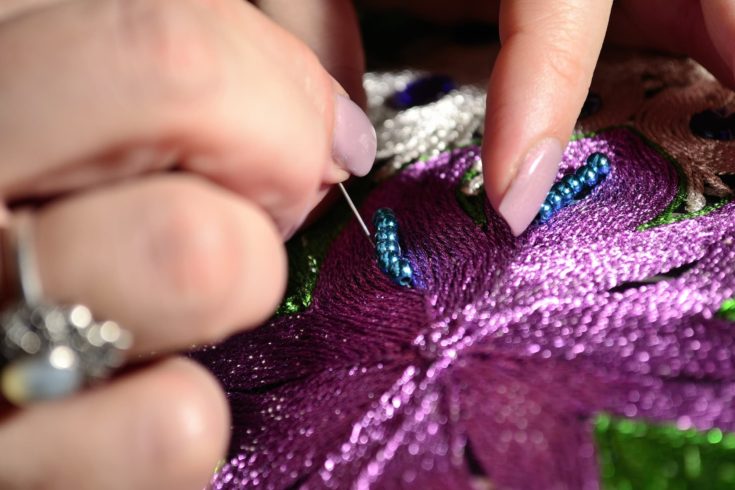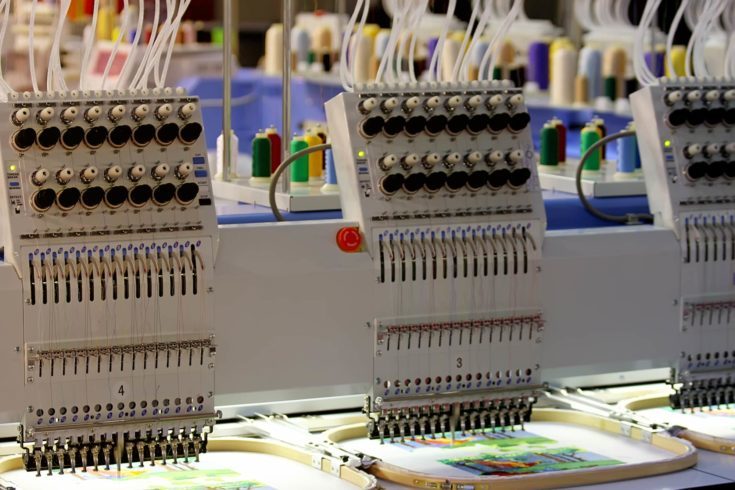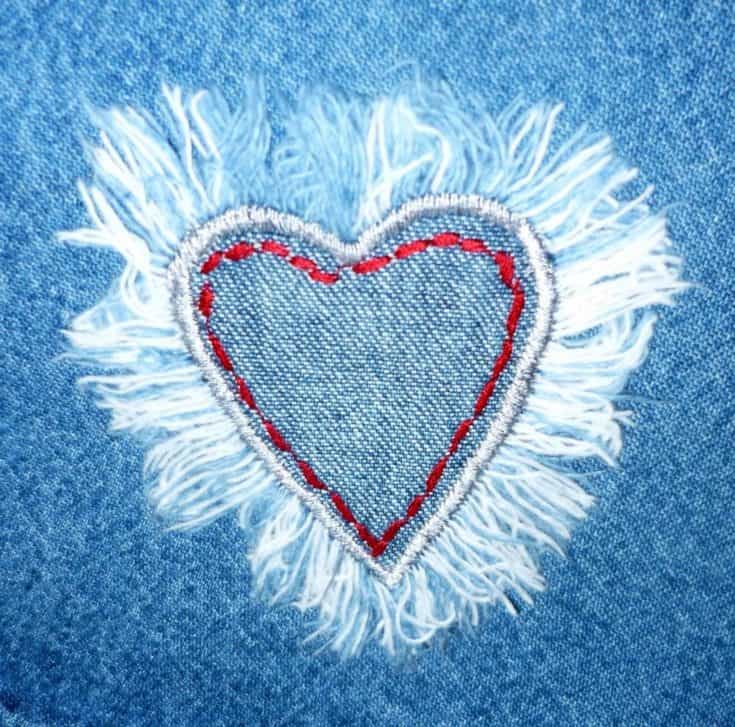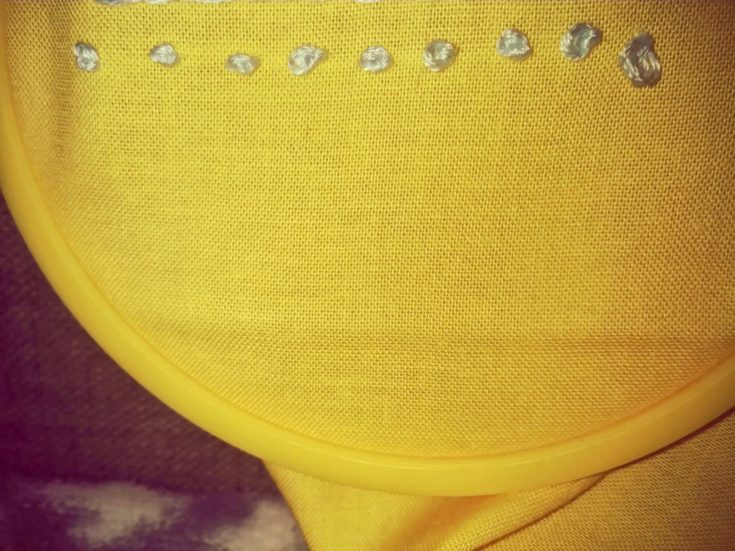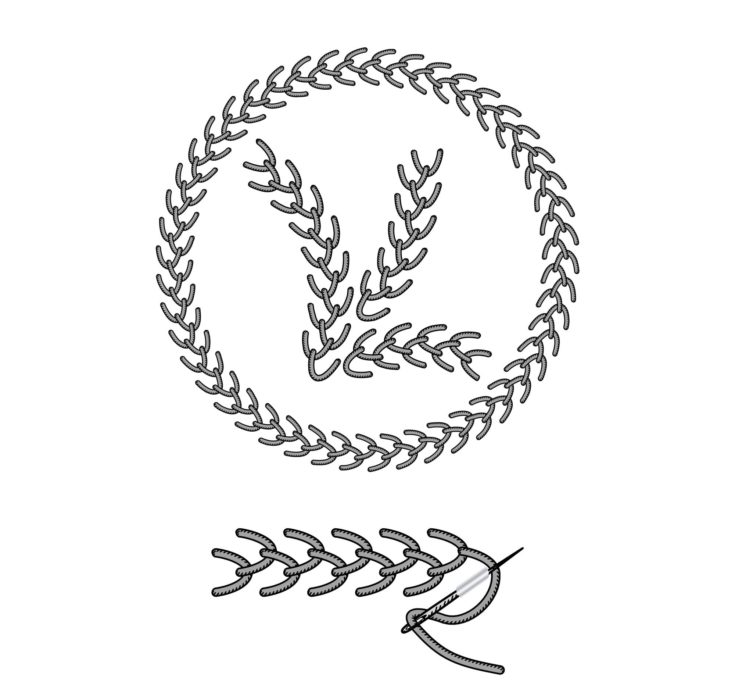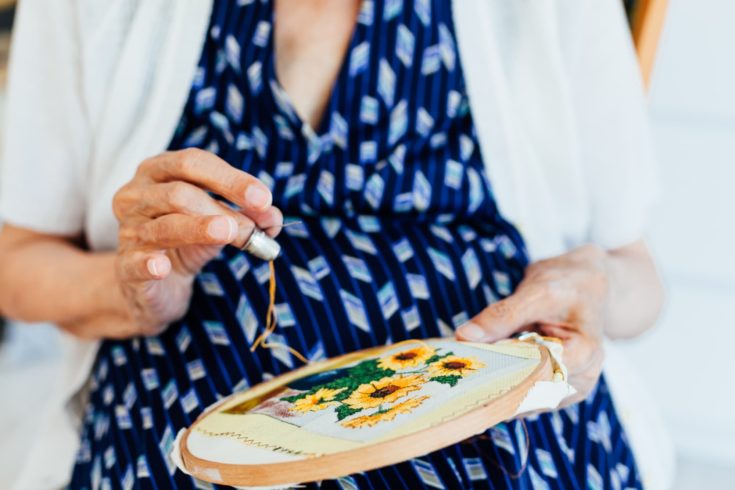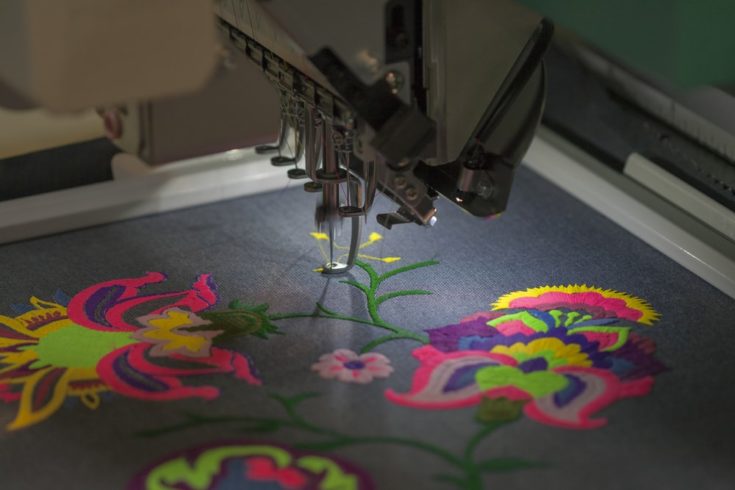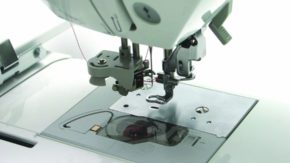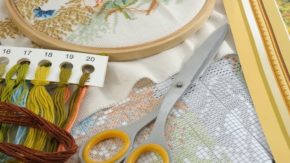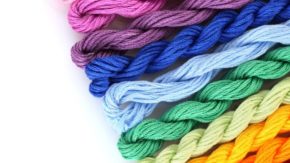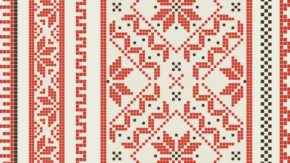The art of embroidery is ancient, and has been used for centuries to help bring beauty and personalization to fabrics, clothing, and other material creations. It is a simple art form that can take on a complex texture, design, and colors to create unique patterns and pictures. The process is a popular and fairly inexpensive way to add to existing materials, and is also very easy to learn.
This article explores what embroidery actually is, its history, and how it can be used. If you have been looking for ways to bring your own flair and styles to life, this is a great way to do so. Learning about this process is an excellent start towards understanding how embroidery works.
What is Embroidery?
You are already familiar with embroidery, even if you don’t know it. Much of what you purchase in stores may be already embellished with this art form, including clothing, purses, luggage, and other material items.
Embroidery, in short, is the art of applying patterns and designs to various surfaces using colorful threads. Textures are created through the use of various stitches, all of which can be done either by hand or with the use of an embroidery machine. You can also incorporate beads, pearls, sequins, and other small details- such as buttons, to your designs.
History of Embroidery
Embroidery has a long and colorful history and is closely associated in Greek mythology with the goddess Athena- making it an incredibly ancient practice as these stories were passed down orally long before being committed to a physical story format. Although the practice was first used as part of a way to mend and create woven garments, the artistic license has been a part of the process for almost as long as clothing has been around.
For example, Cro-Magnon Russians used decorative embroidery and beads on fur clothing and boots 30,000 years ago. Hand-stitched, highly complex decorations were included on Egyptian royalty clothing and burial costumes as early as the 14th Century BCE, as were delicate silks in China that also showcased patterns and mythical motifs for both everyday wear and ritual garments by the 4th Century BCE.
By the 7th Century AD, many cultures had adapted embroidery as a way to record their history and many great tapestries still exist that depict cultural myths, stories, religious beliefs, and even battles.
The Age of Industrialization
With the rise of The Industrial Revolution in the late 18th Century and the advanced technology that came with it, the face of embroidery changed forever. No longer was it only a technique created by hand, but became an art form that could be produced en masse through the use of machinery. The techniques have only advanced since then, and many machines are available for in-home use for personal arts and crafts.
Modern Embroidery Uses
When embroidery became a popular machine creation, the art of hand embroidery became a less popular practice. Handwork is still not as often seen as machine work, but with the advances in technology over the last 10 years- it is easier than ever to make your own personal designs and styles come to life. Embroidery machine software not only includes pre-made designs, patterns, and stitches, but also can allow you to edit, draw, and create your own.
Types of Embroidery
Embroidery techniques, whether done by hand or machine, are all based on stitches created through various types of hand practices created through thousands of years of its history. There are over 60 different types of stitch techniques that you can apply by hand or use of pre-programmed into your machine software. The following highlights the top 10, most popular embroidery stitches that are easy to recognize:
-
Running Stitch
This is a straight stitch technique that is often used as an outline. Stitches are often spaced apart, but can be as close or as far from one another as you desire.
-
Backstitch
Backstitching is also popular for outlining and creates a tight, close line. It also is popular for lettering.
-
Stem Stitch
Stem stitching gets its name because it is popular for floral designs. It also provides a nice, gentle curve.
-
Split Stitch
Split stitches work for both outlining and filling in designs due to its braided design. You can also use it for lettering.
-
French Knot
The French knot is as it sounds, a stitch with a knot created for texture and accent. This is a nice way to add detail as you can change the size of the knot.
-
Satin Stitch
The satin stitch is a great way to fill in spaces and leaves a smooth surface behind. It also works quickly.
-
Chain Stitch
The chain stitch is a bit more complicated and creates a chain-like appearance as you form a loop when you pull your stitch.
-
Lazy Daisy
This is a similar technique to a chain stitch but is easier and results in a petal looking stitch.
-
Feather Stitch
Also similar to a chain stitch is the feather stitch, which uses the second stitch to anchor the first and so on and so forth. You can cover a lot of space with this stitch.
-
Seed Stitch
Used as a filler, the seed stitch is like throwing a packet of seeds into the air and then watching design emerge from where they fall. It is a simple way to make designs but is very creative.
What Types of Things Can I Embroider?
Just about any fabric can be embroidered. Whether you have material that has yet to be made into something, or a finished product, you can most likely add embroidery to it. This includes clothing, hats, bags, purses, bedsheets, luggage, storage bins, or anything else that is made of fabric and allows for enough room to embroider upon.
It is an affordable way to add monogramming and decorative touches to your personal materials since the thread is not an expensive crafting item. Even if you hire somebody to add embroidery for you, they often charge by the size and colors used, with many designs costing between $10 and $20 (or even less).
How Do I Embroider?
You can either embroider by hand or with an embroidery machine. Both are easy to do and simple to learn. Most machines have excellent tutorials, and working by hand simply requires some patience and practice until you are comfortable with the use of a thread and needle.
Both techniques use a frame, or embroidery hoop, of some sort to secure your material tightly and provide a surface to work with that doesn’t bunch or shift. If you work by hand you will need your material of choice, an embroidery hoop, embroidery thread, and a pattern if you do not want to work from a free form. Many patterns can be downloaded and transferred to your material very easily via an iron, or even drawn.
If you are using a machine, it is important you follow the directions of the manufacturer to use the frame properly and choose the type of thread that is accepted by the machine. Since the designs are already added (or you can add more via software and USB ports) you don’t have to worry about transferring onto the material
Conclusion
Hopefully, this article has provided a good overview of the simple process of embroidering to give you an idea of what the technique is, and how it can be used. It is an early art form used to provide decoration and tell a story, and is very indicative of both cultural, and individual preferences.
If you would like to learn to embroider, there are many online tutorials to help walk you through the process. It is a simple enough technique that even children can do it well once versed in its use, and is a great way to create gifts and timeless treasures.
Machine embroidery takes things to an entirely new level with a vast array of stylized designs that can be done quickly and efficiently. These are great for DIY crafting as well as more professional use.
We would love to see your embroidery creations below, and, as always, please share!
